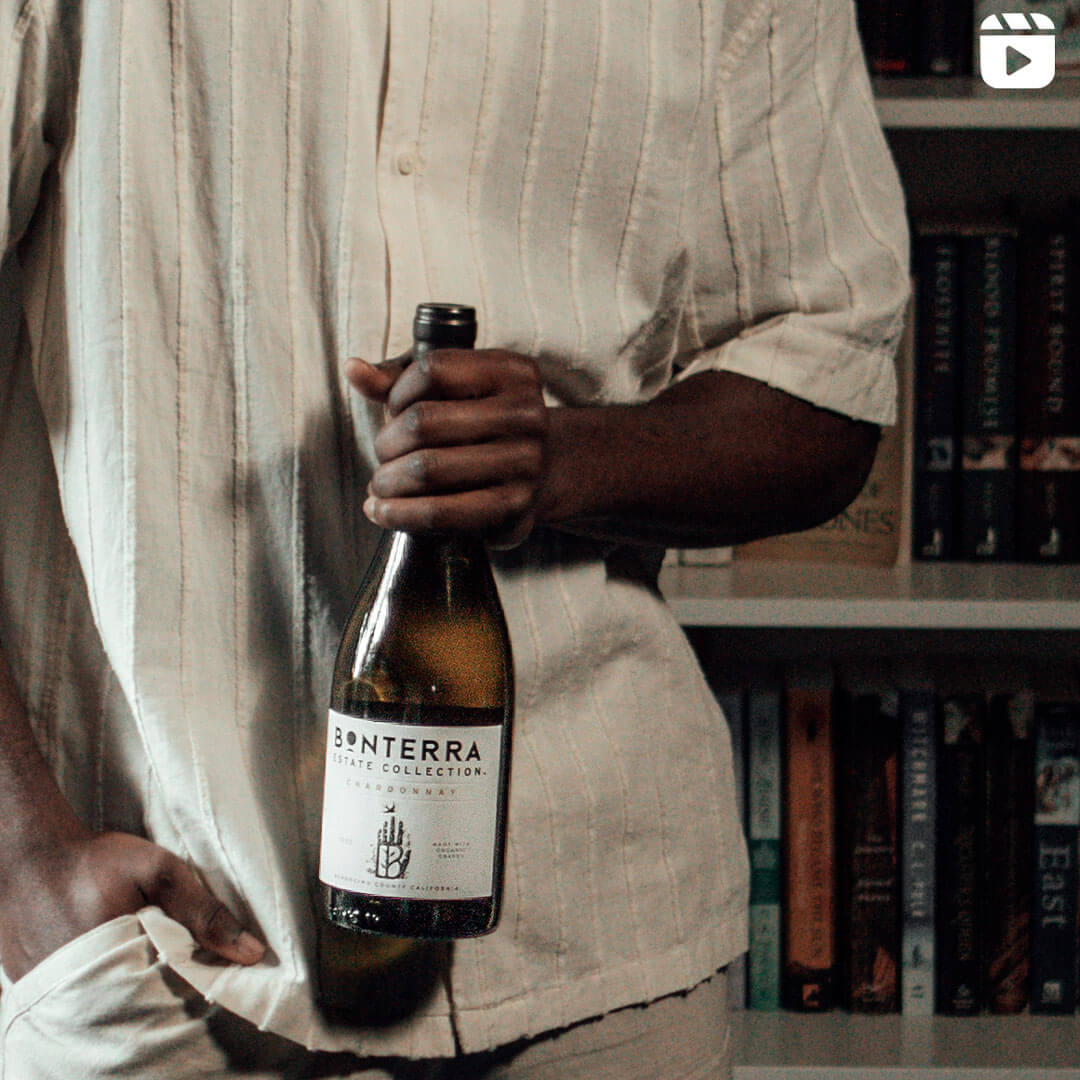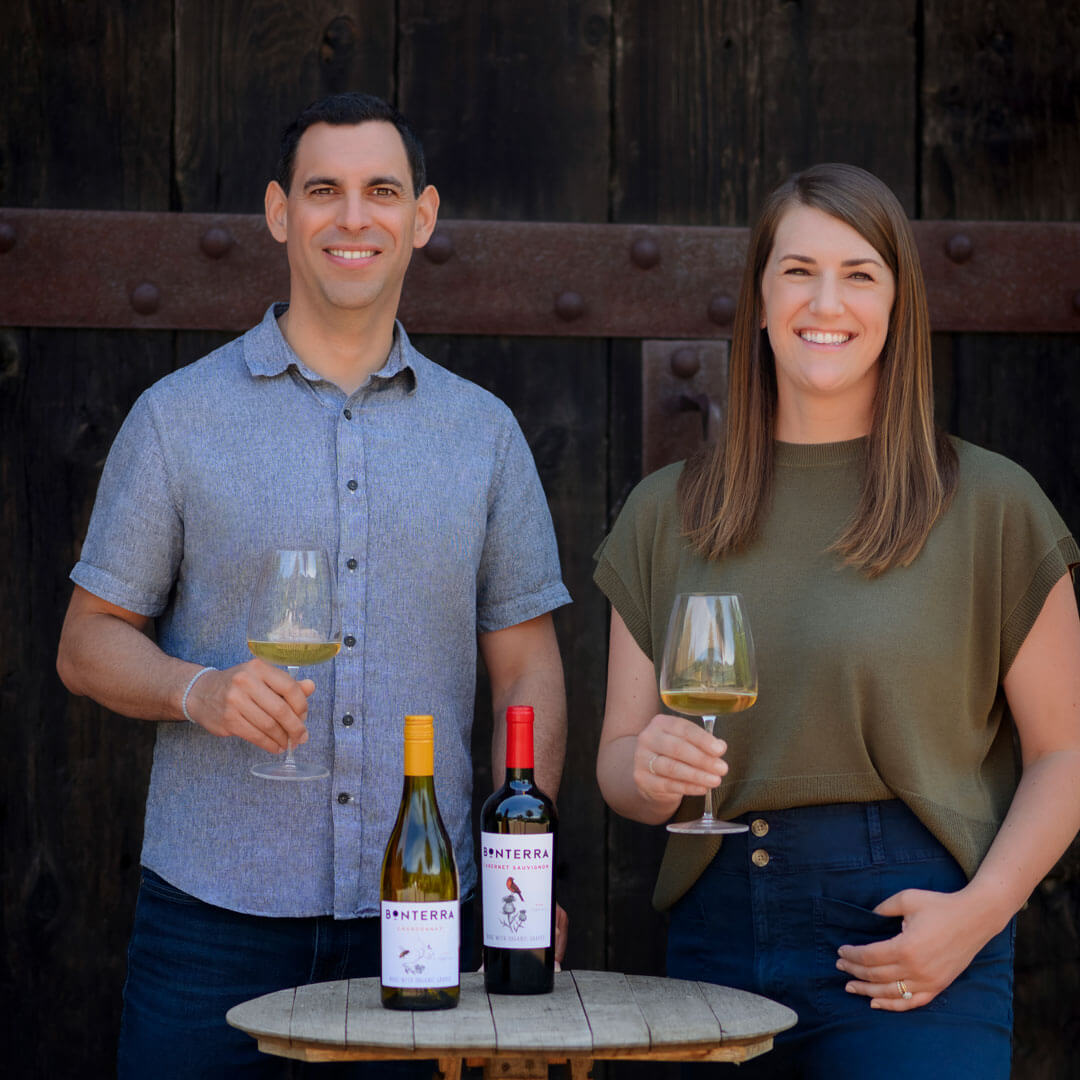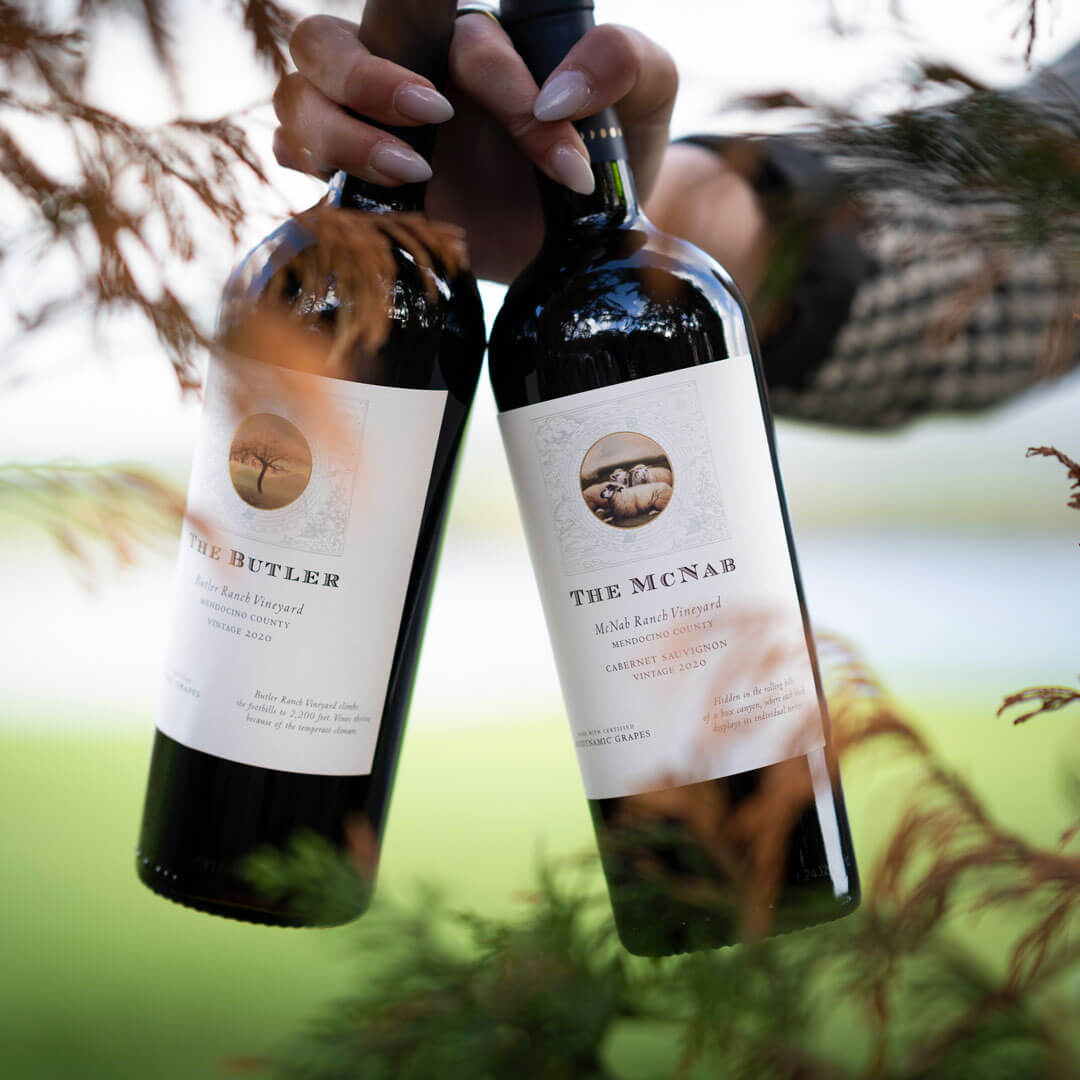At Bonterra, we love Merlot for what it is—and what it isn’t. It’s generous without being overbearing, smooth without being simple. And yet, one question comes up often: Is Merlot sweet?
This is no surprise given Merlot’s soft, approachable character. The straightforward answer is that Merlot is generally a dry red wine, despite its reputation for being more fruit-forward than many other red varietals. This is due to Merlot’s naturally plush texture and ripe, plum-driven flavors, which can create an impression of sweetness even when the wine is technically dry.
Understanding whether Merlot is sweet or dry means looking beyond first impressions—into the winemaking choices and sensory elements that make this grape such a beloved classic. At Bonterra, we see Merlot’s approachability and balance as a perfect match for how people actually drink and enjoy wine today: uncomplicated, but far from unconsidered.
Let’s explore what shapes Merlot’s personality and why it remains one of the most food-friendly red wines you can pour.
The Quick Answer: Is Merlot Sweet or Dry?
Is Merlot a dry wine? Yes, Merlot is predominantly a dry red wine with minimal residual sugar content. However, its approachable, fruit-forward character and smooth tannins can make it taste softer and more accessible than full-bodied reds, such as Cabernet Sauvignon or Syrah. This softer profile often leads people to perceive sweetness where little or none technically exists.
Merlot’s appeal lies in its ability to deliver complexity without harshness. The grape’s naturally moderate tannin levels and balanced acidity create wines that feel luxurious on the palate while maintaining their dry character. This combination makes Merlot an excellent choice for those seeking sophisticated red wines without aggressive tannins or overwhelming intensity.
What “Dry” Means in Wine
Understanding wine sweetness requires knowledge of residual sugar—the natural grape sugars that remain after fermentation completes. During winemaking, yeast converts grape sugars into alcohol, and any leftover sugar determines the wine’s final sweetness level. Wines containing less than 1% residual sugar are classified as dry.
Most Merlot wines contain between 0.1% to 0.5% residual sugar, placing them firmly in the dry category. This minimal sugar content means that any perception of sweetness comes from other factors, such as ripe fruity flavors, smooth texture, or aromatic compounds that our brains associate with sweetness based on past experiences.
The distinction between technical dryness and perceived sweetness is crucial for understanding what a Merlot wine is. While the wine may taste rich and fruit-forward, these characteristics don’t indicate actual sweetness but rather reflect the grape’s natural flavor profile and winemaking techniques.
That’s why we rely on organic farming and minimal intervention at Bonterra: to let Merlot’s natural richness and structure shine without relying on added sweetness or manipulation.
The Classic Flavor Profile of Merlot
Merlot typically exhibits ripe red and dark fruit flavors that create its signature appeal. Common tasting notes include:
- Plum and dark cherry: Rich, concentrated fruit flavors that provide depth
- Blackberry and blackcurrant: Darker fruit notes that add complexity
- Vanilla and spice: Often developed through oak aging
- Cocoa and coffee: Secondary flavors that emerge with proper aging
- Herbal undertones: Subtle notes of dried herbs or tobacco
These flavor characteristics combine with Merlot’s naturally soft tannins to create a wine that feels lush and approachable. The smooth texture allows the fruit flavors to shine without the grip or astringency found in more tannic red wines. This combination can create an impression of richness that some mistake for sweetness.
Factors That Influence Merlot’s Sweetness Perception
Climate and Growing Region
Climate significantly impacts Merlot’s final flavor profile and perceived sweetness. Warm-climate regions like California’s Napa Valley or Washington State produce Merlots with riper fruit characteristics and higher alcohol levels. These wines often display more concentrated flavors that can feel lusher on the palate while remaining technically or nearly dry.
Cool-climate Merlots, such as those from Bordeaux’s Right Bank or northern Italian regions, tend to show more restrained fruit flavors with higher acidity. These wines emphasize minerality and earthiness over pure fruit expression, making their dry character more apparent. Growing season length and temperature variations further influence grape ripeness and flavor concentration.
Soil composition also plays a crucial role in Merlot’s development. Clay soils, common in premium Merlot regions, retain moisture and promote slow, even ripening. This gradual development allows flavors to concentrate while maintaining balanced acidity, resulting in wines with depth and complexity rather than simple fruit sweetness.
Winemaking Techniques
Several winemaking decisions influence Merlot’s final character and sweetness perception. Fermentation temperature affects flavor extraction—cooler fermentation preserves delicate fruit aromatics, while warmer temperatures extract more intense flavors and color. Most premium Merlot undergoes controlled fermentation to balance these elements.
Oak aging adds complexity through vanilla, spice, and toast flavors that can enhance the perception of richness. French oak barrels, commonly used for quality Merlot, impart subtle flavors that complement rather than overwhelm the grape’s natural characteristics. The length of oak aging influences the wine’s texture and taste integration.
With Bonterra Merlot, our use of oak is always intentional: meant to support the fruit, never mask it.
Blending practices also affect Merlot’s profile. Many producers blend small amounts of Cabernet Sauvignon or Cabernet Franc with Merlot to add structure and complexity. These blends can create wines with enhanced depth while maintaining Merlot’s approachable character. For a deeper look at how these varietals differ in structure and taste, explore our guide on Cabernet Sauvignon vs. Merlot.
Bonterra Merlot: A Smooth, Dry Expression
Our Bonterra Merlot showcases the elegant, dry character that defines exceptional Merlot. Through our commitment to organic farming practices, we cultivate grapes that express pure, authentic flavors without synthetic interventions that can mask terroir.
The wine features ripe strawberry and pomegranate flavors accented with hints of dried herbs, creating a complex yet approachable profile. Our minimal-intervention winemaking preserves these natural characteristics while allowing the wine’s structure to develop gracefully. The result is a Merlot that exemplifies the varietal’s smooth, dry style.
Regenerative, organic vineyards provide ideal conditions for Merlot cultivation. Maritime influence moderates temperatures, allowing for extended ripening periods that develop flavor complexity while maintaining balanced acidity. This careful attention to vineyard practices ensures grapes with concentrated flavors and natural balance.
Sustainable farming practices, including beneficial cover crops and natural pest management, create a thriving ecosystem that supports vine health. This holistic approach yields grapes with exceptional quality and pure expression, resulting in different types of wines that truly represent their origin while delivering the elegant, dry character that makes Merlot so versatile.
Food Pairings That Complement Dry Merlot
Merlot’s dry profile and smooth tannins make it exceptionally versatile with food. The wine’s balanced acidity and fruit-forward character complement roasted meats beautifully, particularly beef and lamb dishes, where the wine’s rich taste enhances savory flavors without overwhelming them.
Mushroom-based dishes create natural partnerships with Merlot’s earthy undertones. Wild mushroom pasta, mushroom risotto, or grilled portobello mushrooms allow the wine’s complexity to shine while the umami-rich flavors complement Merlot’s natural depth. These pairings demonstrate how dry wines can enhance rather than compete with food flavors.
Aged cheeses like aged cheddar, Gouda, or Parmigiano-Reggiano pair excellently with Merlot’s dry character. The wine’s fruit flavors provide a pleasant contrast to the cheese’s sharpness, while its balanced acidity cuts through rich, creamy textures. These combinations showcase Merlot’s food-friendly nature.
Mediterranean cuisine, including herb-crusted lamb, ratatouille, or grilled vegetables, harmonizes beautifully with Merlot’s profile. The wine’s herbal notes complement Mediterranean herbs, while its smooth texture doesn’t compete with complex spice combinations.
The Verdict on Merlot’s Sweetness
Is Merlot sweet? The definitive answer is no—Merlot is a dry wine style with minimal residual sugar content. However, its softer tannins, ripe fruit flavors, and smooth texture can create an impression of sweetness that makes it particularly approachable for wine enthusiasts seeking elegant red wines without aggressive characteristics.
Understanding this distinction helps wine lovers appreciate Merlot’s true character. The wine’s appeal lies not in actual sweetness but in its balanced approach to red wine complexity. This makes Merlot an excellent choice for those exploring red wines or seeking versatile options for food pairing.
Quality Merlot demonstrates that dry wines can be both sophisticated and accessible, offering complexity without intimidation and richness without cloying sweetness. This balance explains why Merlot remains one of the world’s most beloved red wine varietals, perfect for both casual enjoyment and special occasions.
And whether you’re new to Merlot or returning to a classic favorite, Bonterra’s expression proves that sustainably grown, organically farmed wines can deliver depth, balance, and a clear sense of place in every glass. Explore our wine club and wine online for memorable Merlot and more.
REFERENCES
Wine Enthusiast. (n.d.). Everything You Need to Know About Merlot. Wine Enthusiast.
https://www.wineenthusiast.com/culture/wine/merlot-wine-guide
Decanter. (2022, May 27). Why Do Dry Wines Sometimes Taste Sweet? Decanter.https://www.decanter.com/learn/why-do-dry-wines-sometimes-taste-sweet-484002/




